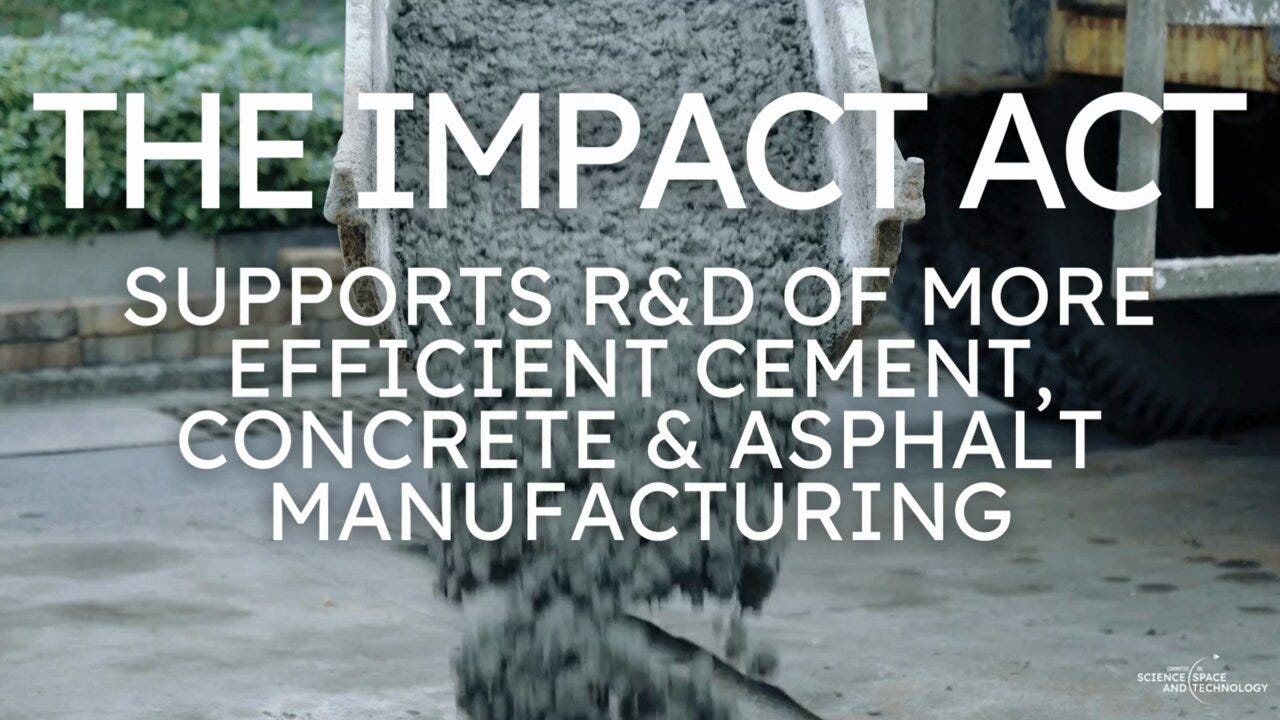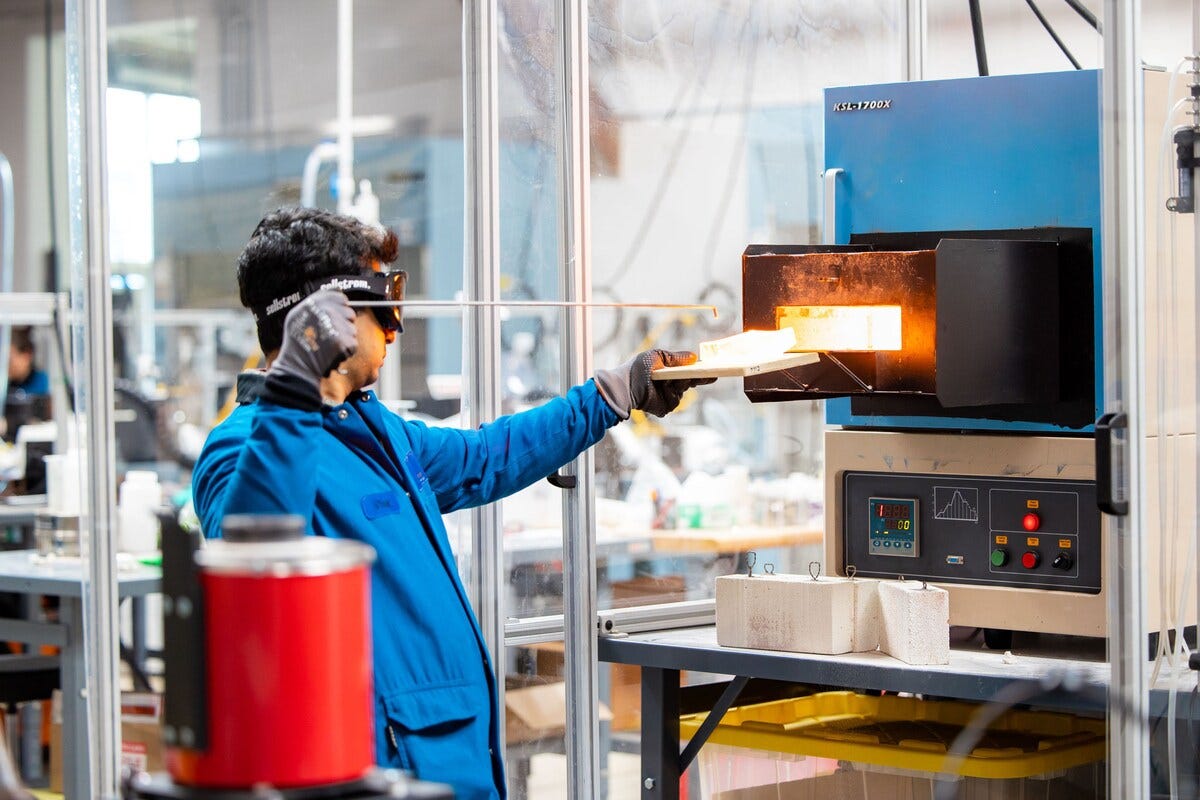How green concrete can save the world♻️
& how cement production creates 8% of global CO2 emissions
We all know: American politics is divided.
But some issues are bringing both parties together, even in these times.
You might not have heard that more than 80% of House of Representatives members voted to pass a law called the IMPACT Act last month.
The IMPACT Act stands for the Innovative Mitigation Partnerships for Asphalt and Concrete Technologies Act.
The Act would have the Department of Energy:
establish a program dedicated to advancing the production of low-emissions cement, concrete and asphalt.

Why low-emissions cement production is important:
Concrete is the second most used substance on Earth (after water),
More than half of all buildings worldwide are made of concrete.
It’s responsible for 9% of global CO2 emissions.
The broad support for the IMPACT Act in a bitterly divided Congress attests to a growing consensus in Washington and around the world: we must find ways to make concrete production more eco-friendly.
Today’s topic is green concrete.
This term refers to an emerging set of new scientific developments in concrete & cement production designed to:
reduce carbon emissions & other pollution from the cement production process
make the global construction industry more environmentally friendly.
Green concrete expert & USC professor Thomas Petersen explained that he & other green concrete researchers are trying to understand:
“How the [concrete] material organizes itself, and what kind of alternatives you might be able to add to create similar, equal or improved properties.
That, in turn, could help make it greener.”
What is Concrete?
It’s a simple composite material composed of cement and three other basic ingredients:
Virgilio Barrera, a Swiss construction industry spokesman, explained the role of cement & concrete in the global construction industry:
“Cement is the flour [and] concrete is the cake, the end product.
That’s what you see spinning in trucks across the U.S. to build infrastructure.”
Even though concrete is simple, the process of producing cement is far from it.
Cement production is responsible for 8% of global carbon dioxide emissions. And it literally takes tons of energy (see below).
Much of the current carbon emissions from cement production come from China, which has produced & used extraordinary amounts of concrete in recent years.
China produced 4.9 billion tons of concrete in 2020 and 2021.
That’s more than the U.S. produced between 1900 and 1999!
What’s the state of Green Concrete today?
While most global cement production hasn’t yet implemented “green” production strategies, some of the current green concrete methods used on a smaller scale include:
incorporating recycled materials into the concrete reduction process
utilizing alternative ingredients to reduce concrete’s environmental impact
Reducing the amount of CO2 emitted in the cement production process
In 2023, a U.S.-based company named Brimstone announced that its carbon-negative cement has the same structural integrity and chemical composition as normal cement.
The company said that their green cement is:
the first carbon-neutral or carbon-negative cement to meet that requirement for industrial use.

What’s stopping Green Concrete adoption?
There are two major hurdles for the widespread adoption of green concrete:
Developing green concrete production methods that are scalable and commercially-viable
Convincing the construction industry to start using green concrete
The second hurdle might be more difficult than the first, given that:
80% of the U.S. construction industry is made up of smaller companies.
These companies may not have the resources or technical expertise to implement green concrete-making methods.
However: the passage of the IMPACT Act signals that the U.S. federal government wants to support green concrete development.
When President Biden & Congressional Democrats passed the Inflation Reduction Act (IRA) in 2022, it allocated $350M in grants and funding to help with:
the development and commercialization of green concrete and other “lower embodied carbon construction materials.”
Some experts believe that the green concrete & cement industry will grow by over 12% annually by 2028.
The bottom line: It remains to be seen whether these serious bipartisan efforts to support green concrete research & development will be stymied by the Trump administration — directly or indirectly.
ART OF THE DAY
Thank you for reading. Please reply to this email if you have any thoughts or feedback.
Yours,
Dr. Dan Smith












